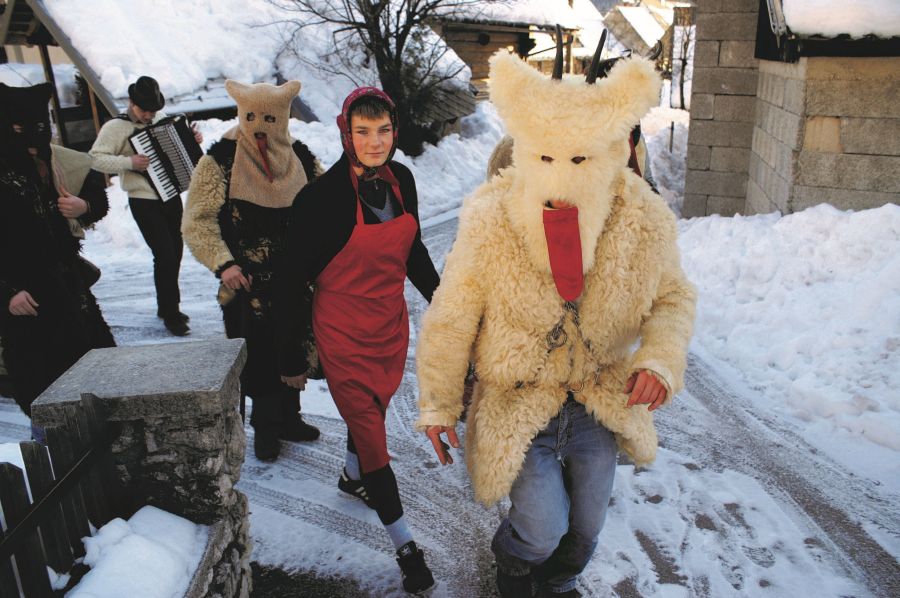Museums in Bohinj



Cultural heritage of Bohinj
Bohinj’s cultural heritage is a testament to how difficult life was in the old days in this beautiful area below the Julian Alps.


History of mountaineering in Bohinj
Mountaineering in Slovenia has an extremely interesting and rich history. It enters the classic era of mountaineering, marked by the conquest of Europe’s most important mountain peaks, with Triglav, or more precisely, with its Bohinj side.
Triglav is an important mountain of European and global significance, a mighty landmark in the south-east of the Alpine chain, remarkable in its appearance and cultural and historical significance.

Mt. Triglav
Triglav is an important mountain of European and global significance, a mighty landmark in the south-east of the Alpine chain, remarkable in its appearance and cultural and historical significance.
Its summit was first reached on 26. August 1778, 8 years before Mont Blanc, 22 years before Grossglockner, 87 years before the Matterhorn, 79 years before the founding of the first mountaineering organisation in the world (England) and 94 years before the founding of the first mountaineering association in Slovenia, the Bohinj Triglav Friends. The first ascent to the summit is therefore not about imitation or competition with others, but an original, independent and pioneering act of exploration.
Four brave men
The honour of being the first to climb to the top of Triglav goes to the Bohinj local people (Luka Korošec, a farmer and miner from Koprivnik, Matevž Kos, a miner from Jereka, Štefan Rožič, a hunter from Savica, and Lovrenc Willomitzer, a doctor from Stara Fužina).
History of mountain farming in Bohinj
Mountain farming, which dates back to the 13th century, and cheese-making has historically been the foundation of agriculture in Bohinj. The lack of arable land, long winters and short summers meant that the inhabitants were more involved in livestock farming (cows, goats, horses, sheep). For a long time, milk and dairy products have been the main staple of everyday diets.

Pastures
According to the data, there were about 40 mountain pastures in the past. They were divided into hay pastures, mid mountain pastures and high mountain pastures. So in spring, shepherds began the season on the hay pastures, which were at their lowest. The cattle were then driven to the middle and high mountain pastures, and then back to the valley in the autumn, in reverse order. Due to the high dependence of the peasant economy on pastoral livestock farming, Bohinj continued to grow until the second half of the 20th century, the oldest form of the so-called individual shepherding.


War in Bohinj
During the First World War, Bohinj became a staging area – a transition zone between the hinterland and the battlefield. Because it is located next to the Bohinj railway and because it was not in range of Italian artillery, Bohinj became a rallying point for soldiers mopping up losses on the Soča front. From there, they were sent to the area of Tolmin and Krn.
In autumn 1915, several thousand soldiers of the Transitional Formations gathered here. Many of them were trained for war only in Bohinj and then sent to the battlefield. Bohinj also served as a resting place for wounded and sick soldiers. It was the supply route for the northern part of the 15. corpus, that’s 50. Division, which occupied the front from Batognica to Mrzli vrh in the Krn Mountains.
The Iron Seal
Ajdovski gradec, where the greatest Slovenian poet set his epic poem The Baptism at Savica Fall, in which he describes the baptism in his own poetic way, is also a rich archaeological site. You could say that Ajdovski gradec is a symbol of the iron industry in Bohinj. It is the iron industry that has been a decisive factor in the development of Bohinj for more than 2500 years.

In 16. century, the iron and steel industry in Bohinj boomed. Ironworks were established in Bohinjska Bistrica (na Pozabljenem) and Stara Fužina (Staro kladvo). The production of iron changed due to the increasing demand, thanks to the Latician blacksmiths who moved to Bohinj from Friuli Venezia Giulia.
In 1777, the ironworks were bought by Žiga Zois, a patron of culture, mineralogist, metallurgist and businessman. Zois devoted himself with great zeal to measures to improve the economic situation of the Bohinj iron production. He had the old narrow path through Štenge, which until then connected Bohinj with the rest of Carniola, widened, creating a 3m wide path on the right bank of the Sava. He introduced a new mining order in the Bohinj mines in an attempt to improve the supply of ore to the smelters. He had a bridge built over the Mostnica stream, known today as the Devil’s Bridge.


Bohinj architecture
In Bohinj, you can see different types of buildings and architectural masterpieces from different time periods. All important immovable heritage is linked to the space in which it was created, highly functional and pleasing to the eye. The imaginative building solutions, construction materials and paintings are, according to the time of their creation, at least parallel to the art currents in Carniola region, if not already showing advanced elements.
”Otepovci”
‘Otepovci” resemble carnival shemites, and the furs worn by some of them even make them resemble kurents, laufars and škoromat. However, they are none of the above, as the otepci do not chase away winter, but wish happiness, prosperity, fertility and health in the house in the coming New Year. Although many people find otepovci scary, their purpose is not to frighten the winter or the locals, but to bring joy into the homes of the locals with their antics and local music.













